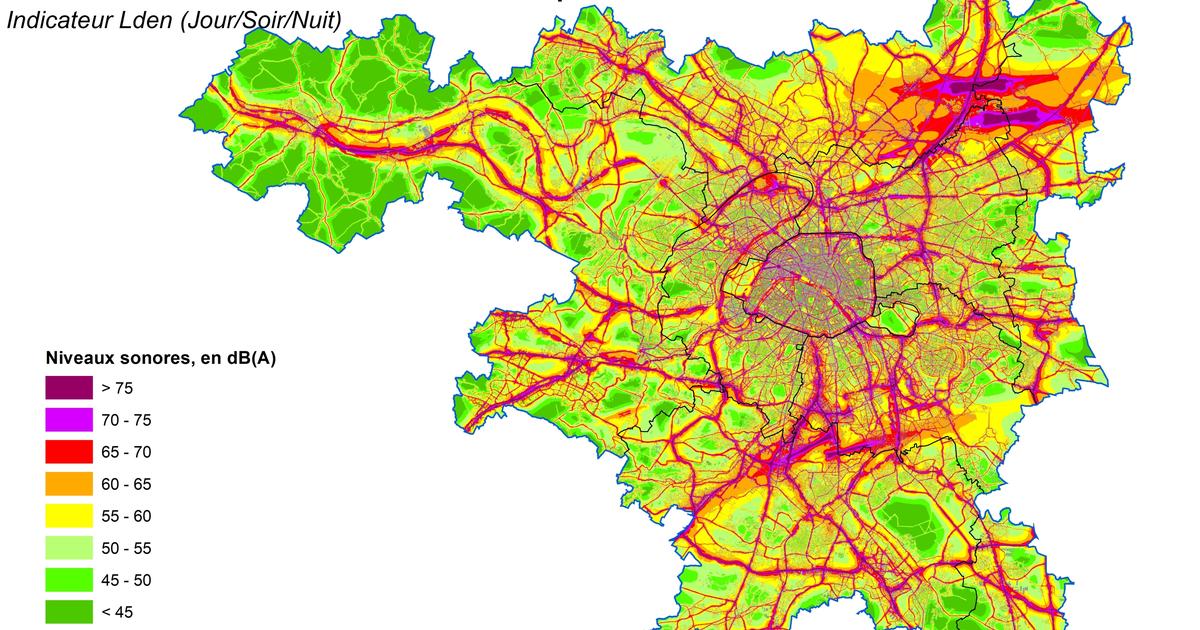More than eight and a half million Ile-de-France residents (80% of the region's inhabitants) are exposed to noise levels above 53 decibels, a target recommended by the World Health Organization (WHO), due to road traffic. More than a million are above the less stringent French regulatory limit.
"Even if a slight improvement is noted compared to 2019, particularly related to the reduction in traffic, the observation remains worrying," says Fanny Mietlicky, director of the noise observatory in Île-de-France, Bruitparif. Unsurprisingly, exposure is highest along major roads: the region has more than a thousand kilometres of expressways and motorways. The diagnosis hides territorial disparities, with the Greater Paris metropolis accounting for 80% of those exposed.
Health impact
Read also"We need to strengthen public policies against the harmful effects of noise"
On Friday, as part of UNESCO's Sound Week, Bruitparif presented an update of the maps of noise generated by transport. This diagnosis is carried out every five years in fourteen cities in the region. It is based on modelling that takes into account traffic data at different times, speed, road surface and the composition of the vehicle fleet. "We also integrate all the available information about the topography: the relief, the buildings, any noise barriers, etc. ", says Fanny Mietlicky. The map thus created is cross-referenced with that of the demography of the Ile-de-France region. Established to guide the public authorities in the implementation of prevention plans, all the maps can be consulted online.
The public body also notes a decrease in the number of people exposed to railway noise. The improvement can be explained by a change in the methodology of the study, but also by the modernization of the trains and the installation of noise barriers, according to Bruitparif. Trains, RER, elevated metros and trams still affect about one million inhabitants of the densely populated Ile-de-France area, with the Greater Paris metropolis being particularly affected.
Read alsoHow noise seriously harms health
As for air noise pollution, it has worsened due to the densification of the municipalities over which planes fly and the increase in air traffic. Almost 500,000 people live in homes with values above the 55 dB limit. According to Fanny Mietlicky, "despite the curfew decided at Orly, night-time noise remains a major problem".
Across the region, there are few areas that are completely free of transport noise. The cumulative health impacts they produce are massive: 22% of the region's inhabitants experience "strong discomfort" related to transport noise, while 7% experience "strong sleep disturbances." Noise is also implicated in the development of cardiovascular disease. This represents, according to Bruitparif, an average of more than 9 months of healthy life per individual.

